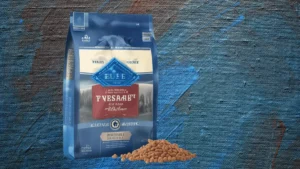Homemade Cat Food: A Nutritious and Loving Option
Are you considering making homemade cat food for your feline friend? It’s a wonderful way to ensure they’re getting the freshest, most nutritious ingredients. Homemade cat food can be tailored to your cat’s specific needs, allergies, and preferences. Let’s dive into some recipes, tips, and the benefits of making your own cat food.
Benefits of Homemade Cat Food
- Fresh Ingredients: Homemade food guarantees the freshest ingredients, avoiding preservatives and artificial additives often found in commercial cat food.
- Tailored Nutrition: You can customize the recipe to meet your cat’s specific dietary requirements, whether they have allergies, sensitivities, or need extra nutrients.
- Quality Control: Homemade food gives you complete control over the ingredients, ensuring your cat is getting the best possible nutrition.
- Bonding Experience: Preparing homemade food can be a rewarding bonding experience between you and your feline companion.
Essential Ingredients
When making homemade cat food, it’s crucial to include these essential ingredients:
- Protein: Choose lean protein sources like chicken, turkey, beef, fish, or eggs.
- Carbohydrates: Opt for complex carbohydrates like brown rice, quinoa, or sweet potatoes.
- Vegetables: Incorporate vegetables like carrots, spinach, and green beans for essential vitamins and minerals.
- Healthy Fats: Add healthy fats like olive oil or flaxseed oil for omega-3 fatty acids.
- Supplements: Consider adding supplements like taurine, vitamin E, and calcium to ensure your cat’s complete nutritional needs are met.
Homemade Cat Food Recipes
Here are a few simple and nutritious homemade cat food recipes:
1. Chicken and Rice
- Cook brown rice until tender.
- Boil chicken breast until cooked through and shred.
- Combine rice, chicken, and chopped vegetables like carrots and peas.
- Add a drizzle of olive oil and a sprinkle of taurine.
2. Tuna and Sweet Potato
- Cook sweet potatoes until soft and mash.
- Mix with canned tuna in water.
- Add a tablespoon of ground flaxseed for omega-3 fatty acids.
3. Beef and Quinoa
- Cook quinoa according to package instructions.
- Brown ground beef and drain excess fat.
- Combine quinoa, beef, and chopped spinach.
- Add a sprinkle of calcium powder.
Tips for Making Homemade Cat Food
- Consult a Veterinarian: Before making significant changes to your cat’s diet, consult with your veterinarian to ensure it meets their specific needs.
- Variety is Key: Rotate protein sources and ingredients to prevent boredom and ensure a balanced diet.
- Proper Storage: Store homemade food in airtight containers in the refrigerator for up to a few days or freeze for longer storage.
- Gradual Transition: To avoid digestive upset, gradually transition your cat to homemade food by mixing it with their current food over a few days.
Making homemade cat food can be a rewarding and beneficial experience. By providing your feline friend with fresh, nutritious ingredients, you can support their overall health and well-being. Remember to consult with your veterinarian and experiment with different recipes to find what works best for your cat.
Keywords: homemade cat food, cat nutrition, cat recipes, healthy cat food, DIY cat food, feline health, pet nutrition, fresh ingredients, tailored diet, bonding experience














